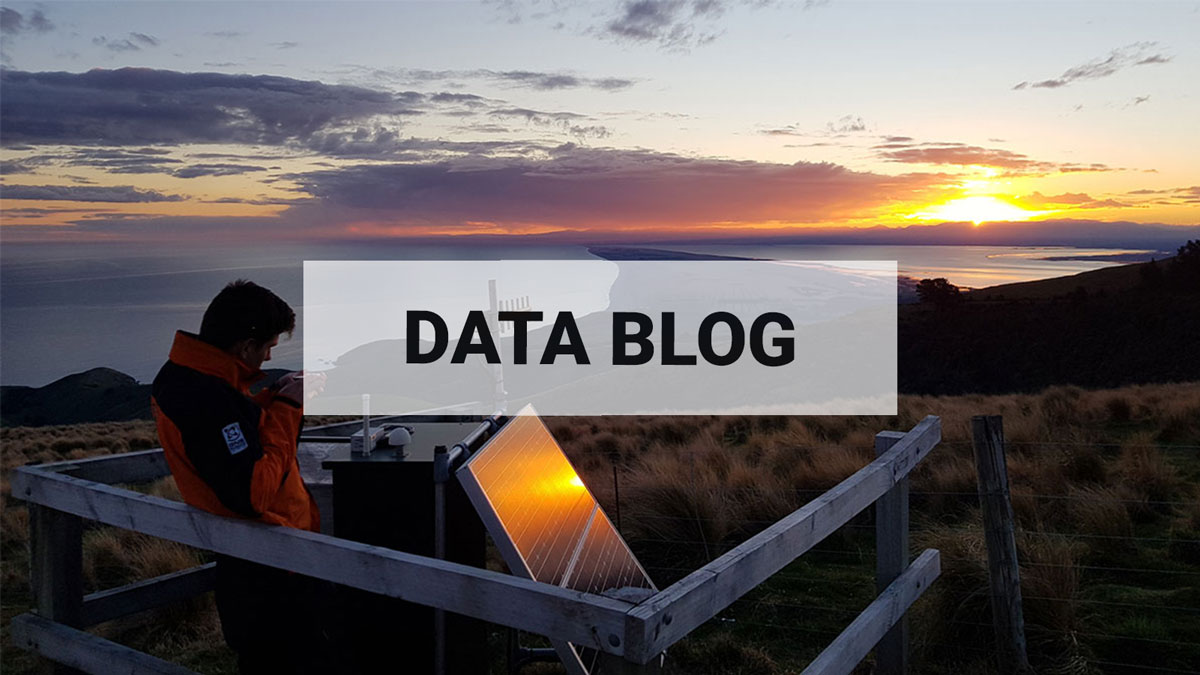
The sound of seismic waves
Welcome, haere mai to another GeoNet Data Blog. Today we are going to explore an interesting use of our data and look at how some of our seismic signals can be reproduced as sound.
Recently we received a request from someone interested in using some of our data in an unusual way. Artist Charlotte Parallel contacted us to help with an art exhibition she was preparing. Intriguingly, Charlotte wanted to use seismic recordings from some of our sensors in Wellington and convert the data into sound.
Earthquakes themselves are a combination of a wide range of frequencies of ground shaking that travel through the Earth. Each seismic wave produces different frequencies of ground shaking. High frequencies are usually felt as sharp jolts, while low frequencies are felt as a gentle rolling. Nevertheless, how we feel these frequencies depends on several factors including the ground shaking frequencies generated and the distance and type of rocks between you and the earthquake. The ‘music’ of an earthquake is the conversion of those ground waves into audible sounds.
Since seismic waves occur at a much lower frequency than the human audible range, we are unable to hear earthquakes directly. Seismometers, on the other hand, can detect a wider range of frequencies and we can compress the time scale of the signal to produce a sound in our hearing frequency range.
How do we make earthquake sounds?
The processing is relatively simple. We first need to request the waveform data from our FDSN data server, the server holds our earthquake waveform data. We then force the signal's mean value to be zero and limit the signal's amplitude to reduce the high frequency noise in the sound signal we are going to make. Then, the values are resampled at 44100 Hz (hertz), a frequency at which music and other sound waves are often sampled. Essentially, the signal is sped up so that the frequency increases, which allows us to hear it.
We can also transform other types of data such as electromagnetic, sea level data, or any high-rate data into sound waves. The sounds of different kinds of waves and signals can help us to pick up patterns and make interpretations or just capture the interest of people by converting them into another sensory medium.
Here’s an example
We’ve tried converting several different seismic signals into sound waves. Some are really interesting, especially those that depict a large earthquake with many aftershocks. Others, where the signal recorded by our seismograph doesn’t change much, are not so interesting. We tried the signal of volcanic tremor from Ruapehu in March 2022, but you’d probably not rush out and buy a CD of the recording!
Here you can listen to the sound produced by a M7.2 East Cape event. The large rumble heard at 8 seconds is the main quake, followed by smaller shocks. The signal was recorded by one of our seismometers located at East Cape lighthouse.
Here’s a slightly more conventional view of the data we converted to sound. It shows the frequency content of the original seismic data through time. Two hours of seismic waveform data were converted to just over 30 seconds of sounds! The M7.2 earthquake is just before 13:30, corresponding to 8 seconds in the sound file. Brighter colours show more ground shaking, which corresponds to louder noises in the sound file.
If you want play around at making earthquake waves into sound yourself, the Python script we used is available with the earthquake sound file.
That’s it for now
The sound has stopped, and that ends our brief look at making sounds from earthquake data. There are probably endless opportunities to make sounds from normally inaudible data. The examples we’ve mentioned only touch the surface. If you produce something interesting from unusual data, please let us know, we would love to see or hear it!
You can find our earlier blog posts through the News section on our web page just select the Data Blog filter before hitting the Search button.
We welcome your feedback on this data blog and if there are any GeoNet data topics you’d like us to talk about please let us know! Ngā mihi nui.
Contact: info@geonet.org.nz


